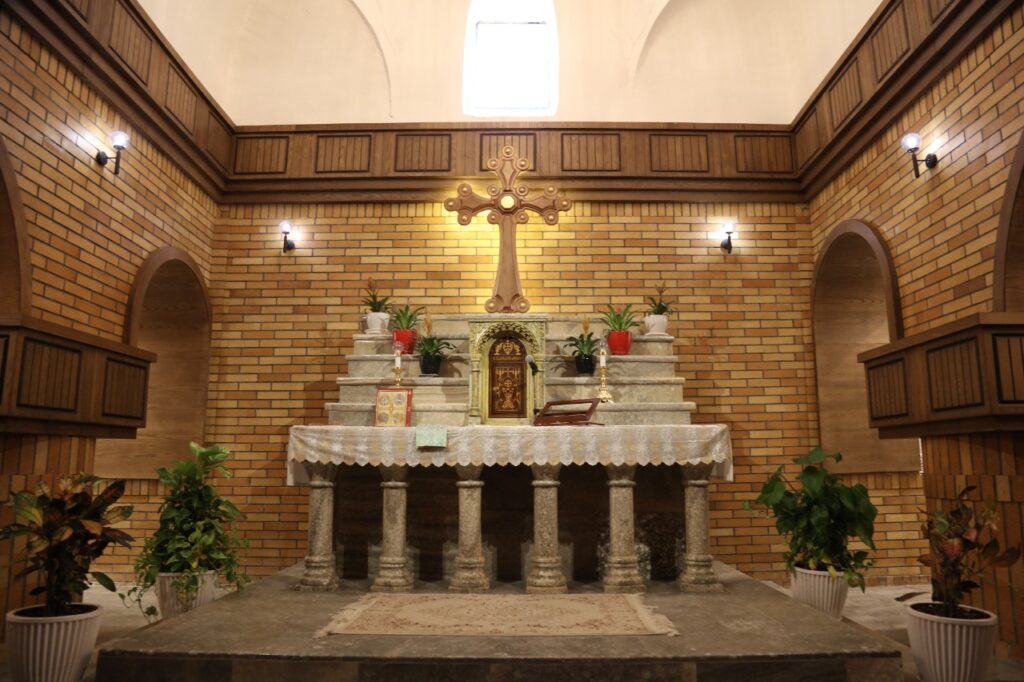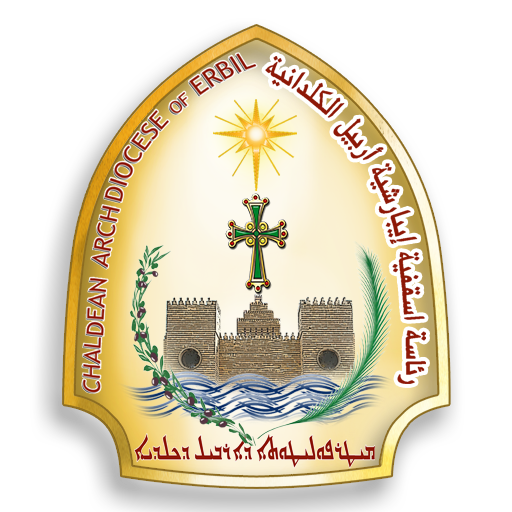OUR CHALDEAN CHURCH HISTORY

The Chaldean Catholic Church’s roots go back to the Church of the East. The Church of the East was founded in nowadays Iraq and goes back to the very early ages of Christianity, which was brought to this spot by the evangelization of St. Thomas the Apostle and his disciples.
The adapted language in the Church of the East is the neo-Aramaic language, which was spoken in the homeland of the Church of the East, Mesopotamia, or the land between the two rivers (Beth-Nahrain). It is said that Christianity had first spread through this area starting from Edessa (today known as Urfa, Turkey); sources assume that this is where the first translation of the New Testament to Syriac was made; Edessa also included a theological school from which came famous and prominent teachers.
The liturgy of the Church of the East is one of the most ancient liturgies as it was founded by the disciples of St Thomas the Apostle, Mar Addai and Mar Mari; some sources also claim that Mar Addai (Thaddeus) is in fact the same Thaddeus of the 12 Apostles. This liturgy is known for its ancient mass prayers, old chants and most importantly its saints which were mostly martyred throughout the persecutions the Church in the East saw. Which is why the Church of the East can also be named: ‘The Church of the Martyrs’.
The Church of the East had used the name “The Chaldean Church” during its first attempt to join the Catholic Church in 1340 AD, but the attempt was not successful; It was united with Rome in the council of Florence in which it declared a united faith and doctrine with the Catholic Church (Rome). There was a period of schisms following the council, and in 1552 the Church of the East faced some hierarchical conflicts due to “hereditary patriarchal succession” which was decided by Patriarch Shemun Basidi in Mosul; as a result, Yohana Sulaqa, Raban Hermizd Monastery abbot, was chosen as a patriarch by those who refused the hereditary succession rule. He travelled to Rome in 1553 and was officially united with the See of Rome and thus declared patriarch for the Church of the East, residing in Amid (Diyarbakir). Meanwhile, the successor of Patriarch Basidi, Shemun VII Bar Mama was still alive, residing in Mosul. This union lasted until 1662 when Shimun XIII Dinkha decided to go back to the traditional doctrine of the Church of the East. This line eventually resided in Hakkari. During the 17th century both patriarchal lines of Mosul and Hakkari went back to the traditional doctrine and were no longer in union with Rome.
When catholic missionaries arrived to Amid, the metropolitan, Joseph I declared one doctrine with Rome and another patriarchal chair was formed in Amid, until the death of Patriarch Joseph VI in 1828. This See was catholic since its formation until it faded away and became essentially one with the See of Mosul.
In 1830, Yohana Hermiz, who descended from the patriarchal line of the See in Alqosh- Mosul, was declared patriarch of Babylon of the Chaldeans by Pope Pius VIII and since then the Chaldean Church of the East was united with Rome. Currently, the successor of this patriarchal line is Mar Louis Rufail Sako, which goes back to the same line established in Seleucia- Ctesiphon (nowadays Baghdad) by Mar Mari. This term (Chaldean Catholic) became the official term for the Church of the East united with the Catholic Church (or the Apostolic see).
The Chaldean Catholic Church is part of the 23 sui iuris (of its own rule) eastern rites within the One Holy Catholic and Apostolic Church; meaning it has its own hierarchy and equal dignity to the Latin rite, Roman Catholic Church. This is evident in the liturgy, language, and Church’s hierarchy. The patriarchate of the Chaldean Church is currently in Baghdad, Iraq under His Beatitude Patriarch Cardinal Louis Sako.
Sources:
Chaldean Patriarchate, Chaldean Church Guide, 2021, (https://saint-adday.com/?p=40930)
Chaldean Patriarchate, Summary of the Chaldean Church History, 2013, (https://saint-adday.com/?p=3336)
Father Azad Sabri, Chaldean Fathers Biographies, 2015.
EWTN, Ecumenical Council of Florence, (https://www.ewtn.com/catholicism/library/ecumenical-council-of-florence-1438-1445-146)
Louis Sako, The Chaldean Church Story of survival, 2013, https://saint-adday.com/?p=3907
